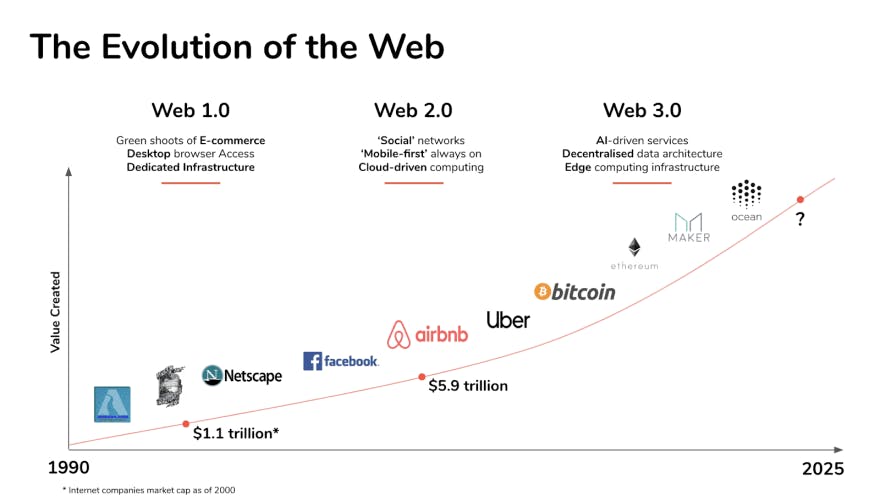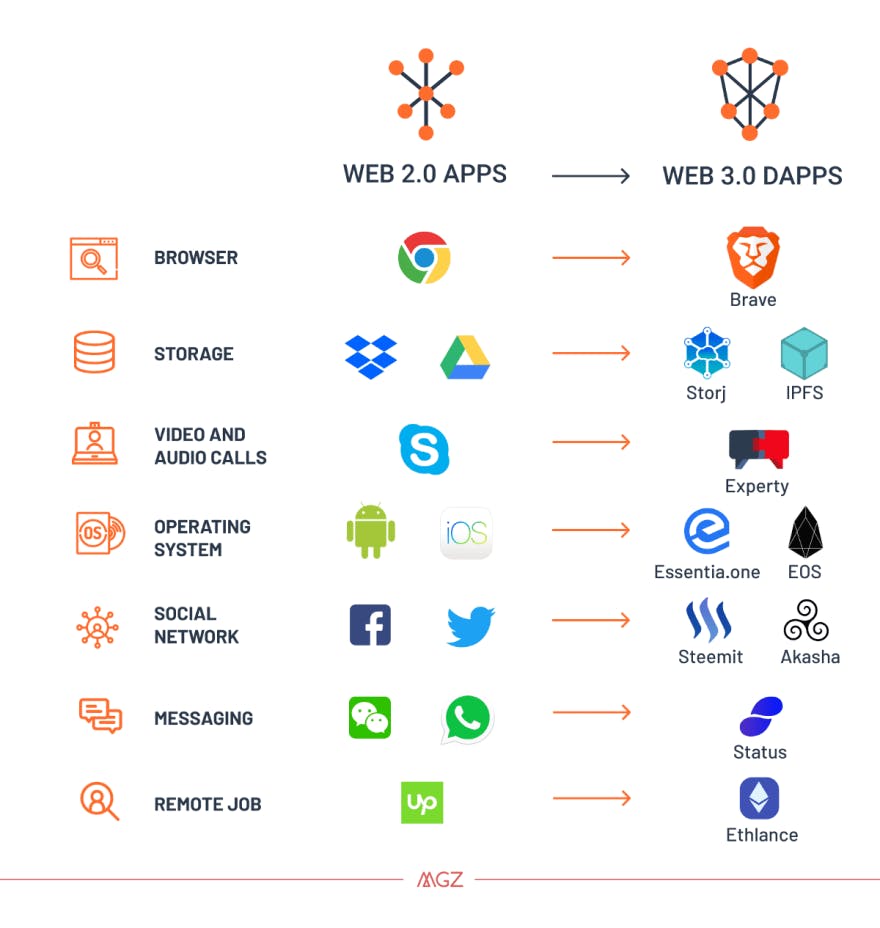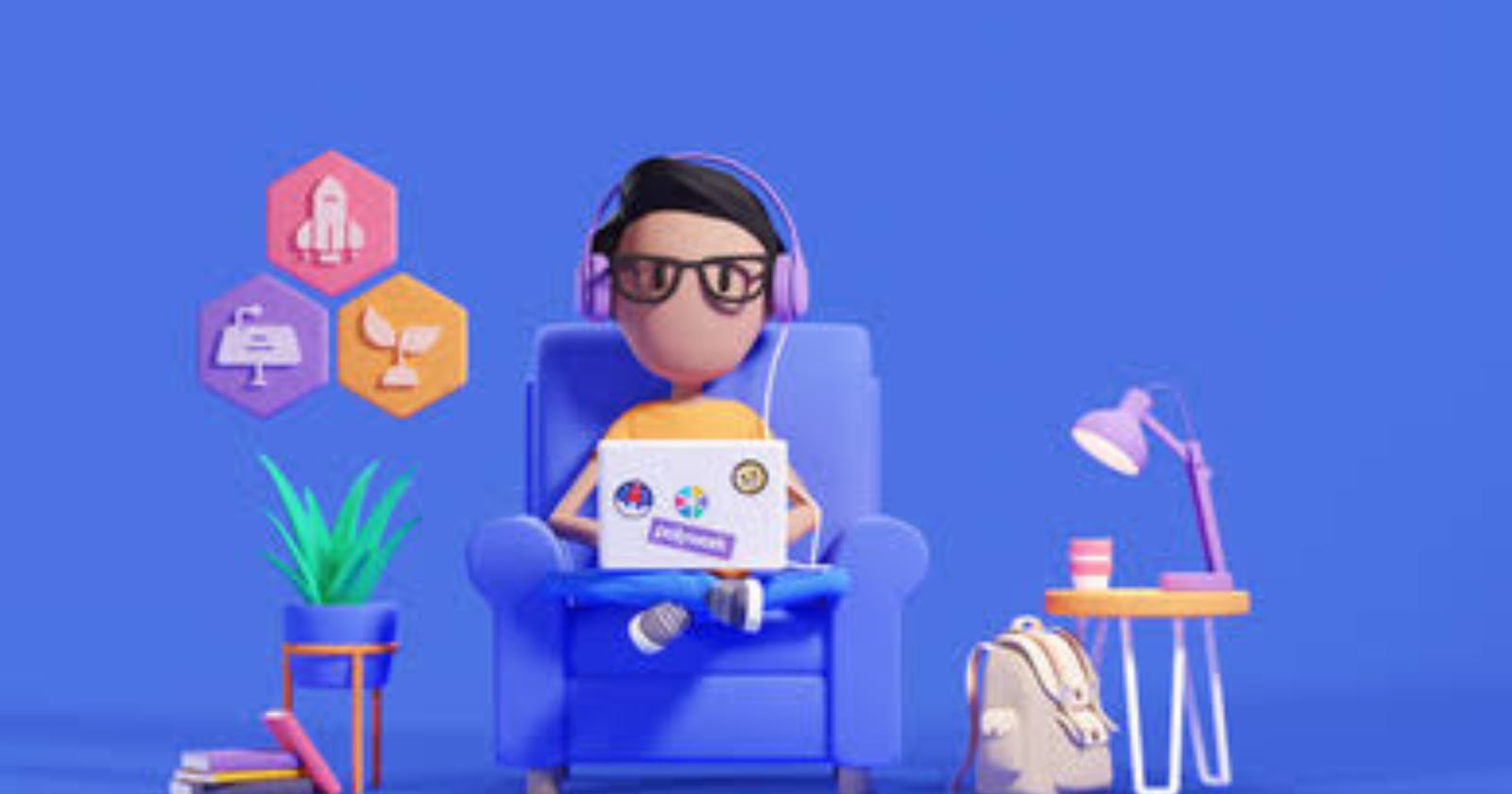The online we use now is considerably different from what it was ten years ago. How is the web evolving, and more importantly, where is it headed next, and why is any of this important? I'll describe how the web evolved in this post, as well as where it's headed next and why it's significant. Consider how the internet influences your daily activities, how social media and mobile apps have altered society, and how the internet is undergoing yet another paradigm shift. The web has changed a lot over the years, and modern applications are hardly recognizable from earlier versions. However, the web that we know today has seen many phases- Web 1.0, Web 2.0, and Web 3.0.
Let's dive a little deeper and discover how the web evolved from its inception to what we know it now.

Web 1.0
Web 1.0 was the initial version of the web, the majority of users were content consumers, and the websites hosting the information—which was mostly in text or image format—were often made by developers. Web 1.0, also known as a read-only web, was in use from around 1991 to 2004 and comprised websites that offered static material rather than dynamic HTML, data and content that were delivered by a static file system rather than a database, and a website that wasn't extremely interactive.
In a nutshell, Web 1.0 was a content delivery network (CDN) that enabled to showcase of pieces of information on the website where users passively receive information without being allowed to post reviews, comments, and feedback. The content here was served from the server's file system and the pages were built using Server Side Includes (SSI) or Common Gateway Interface(CGI). Interestingly, frames and tables were used to position and align the elements on a webpage back then!

It spawned the dot-com bubble, which lasted from 1995 to 2000 and included many internet-based businesses. These were the companies that emerged with Web 1.0:

Web 2.0
Web 2.0 was the second stage of the evolution of the web, also called the read-write web and it was the phase when websites grew in terms of user interaction. It was the period when websites became more focused on user-generated content, usability, and interoperability for end-users, leading them to become the - participative social web.

The majority of us predominantly use web 2.0, also known as the present web, which you might think of as an interactive and social web. In the web 2.0 environment, creating apps is often made simple enough that anyone can do it without needing to be a developer. In web 2.0, it is feasible to post a video, have millions of people view it, interact with it, and comment on it if you have an idea you want to share with the world. Because Web 2.0 is so easy to use, more and more people are starting to create content on the internet nowadays. The current web is very good in many ways but there are some areas that can be further improved, which as the aspect of web 2.0 monetization and security. In the web 2.0 world, many popular applications follow a common pattern in their life cycle, think about some of the applications you use every day and how the following examples apply to them. Monetization of the application, imagine the beginning of popular applications such as Instagram, Twitter, LinkedIn, and YouTube and how they differ today the process typically looks like this company launches the application, then consolidates as many users as possible then monetize your user base, when developers and businesses release popular applications the user experience often becomes very smooth as the application becomes more popular, that's why the can quickly build a foothold in the first place. Many Software Companies don't think about monetization at first, they have a strict focus on growth and new user acquisition but in the end, they need to start making profits, they also need to consider the role of external investors in many cases restrictions on the use of venture capital and the likely negatively impact the life cycle and ultimately the user experience of the applications currently in use. When a company building an application raises venture capital, its investors often expect a return on investment in the order of tens or hundreds of their deposits, this means that instead of choosing a sustainable growth model that can be maintained more organically, companies are often pushed down into two parts promoting or selling personal information. For many web 2.0 companies such as Google, Facebook, and Twitter more data leads to more personalized advertising which will increase your clicks and ultimately your advertising revenue, leveraging and centralizing user data is at the heart of the way the web we know and use today is designed to work. Security and privacy, data breaches are common in web2 applications some websites address these breaches and let you know if you're data have been compromised, in web 2.0 you can't control the data or how the data is stored, in fact, companies often track and store user data without the consent of the user, all of this data is owned and managed by the company responsible for these platforms. Users also have to worry about the negative effects of freedom of expression are also at risk, government often shut down servers if they believe that a person is expressing an opinion that contradicts the publicity. Centralized servers make it easy for the government to intervene, control, or shut down down applications at their sole discretion. Web 3.0 aims to address many of these shortcomings by fundamentally rethinking how to build and operate applications from scratch.
Web 3.0
Web 3.0 is the next generation of the web, also termed the executable web or read- write-execute web. It began with the onset of dynamic applications, interactive services, and “machine-to-machine” interaction. It is used to describe many evolutions of web usage and interaction between various paths. Data is not owned in this case, but rather shared, with services displaying different views for the same web/data.

It has also been referred to as Semantic Web to describe a web in which machines would process content in a human-like way where all data would be connected and understood both contextually and conceptually, leading to the heralding of Artificial Intelligence and Machine Learning. With this, information is more connected thanks to semantic metadata. As a result, the user experience evolves to another level of connectivity that leverages all the available information.
Well, that's all for this article. The internet has radically altered the world we live in today and the ability to be more productive and stay in touch with others through various means is just the tip of the iceberg. Let's see what more Web 3.0 unfolds for us.
Do let me know if this was insightful or even slightly helpful, any feedback is welcome. Want to connect with me, find me here:
